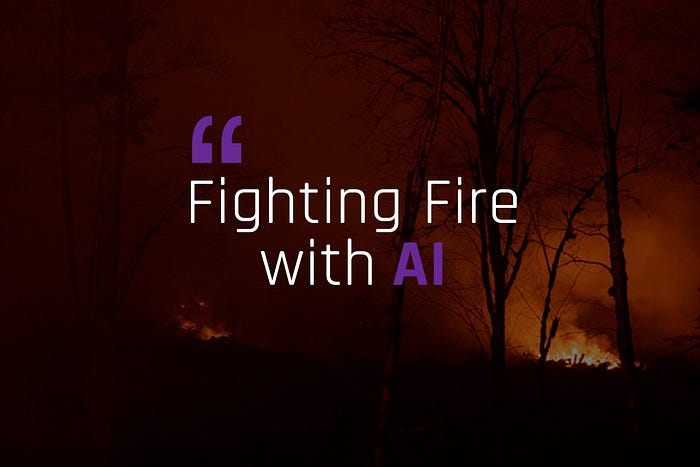Fighting Fire with Artificial Intelligence

Last year’s Camp Fire, the name given to California’s most destructive wildfire, burned over 150,000 acres and was responsible for 86 deaths. This year, as the dry season approaches, the National Guard is helping California with wildfire prevention. The National Guard will remove dead trees and vegetation and will create fuel breaks in the highest fire-risk zones.
To further prevent and fight these disasters, Artificial Intelligence (AI) is making new fire-fighting resources available.
There are currently two NASA satellites in orbit that scan the earth daily. One of their functions (of many) is to detect thermal spots on the earth’s surface that indicate fire. When this data is collected, it is beamed down to the Goddard Space Flight Center located near Washington DC. This process can take up to a few hours. Once the data is received, the images are processed on the Flight Center’s supercomputer and communicated to necessary authorities.
When fighting fires, timing is critical. The hours it takes to distribute satellite data could cost lives. James MacKinnon, a NASA computer engineer, is working on a project to run an algorithm on the Moderate Resolution Imaging Spectroradiometer (MODIS) data. The data will be processed directly on the satellite itself, producing results from the data images in minutes. This system has been “trained” with one-year’s worth of MODIS data and is 98% accurate at identifying fires.
On the ground, WIFIRE was designed to predict a wildfire’s path in real time. This program was developed by a computer scientist, Ilkay Altinas, and her team at the University of California San Diego. WIFIRE is being tested or used by 120 groups across California.
Here’s how it works. Groundcover is what fuels a wildfire. Dry brush is fuel, while green grass, such as on a golf course or park will stop the spread. WIFIRE analyzes the fuel source and combines it with real-time weather information, such as wind and precipitation, to predict a fire’s course and speed.
WIFIRE is also used to anticipate wildfire problems by monitoring hundreds of remote weather stations in the San Diego area. This model is being distributed across California.
Another fire-prevention AI system was one of the important topics discussed at Sacramento State’s Wildfire Technology Innovation Summit last month. Enview for Power Lines detects potentially dangerous situations, such as a tree too close to a power line, using geospatial data. In addition to fire prevention, the data analyzed by Enview can predict power outages or other problems from weather or man-made conditions.
NASA is also designing a system called AUDREY (Assistant for Understanding Data through Reasoning, Extraction and sYnthesis) that will help first responders make decisions in dangerous situations. Firefighters, police, and paramedics will receive a stream of data that alerts them to dangerous situations in their immediate surroundings. This program also improves time-sensitive communications between first responders. AUDREY will pilot this year in California, Washington DC, and Ontario, Canada.
Unfortunately, the organizations working on these systems are watching the wildfire season becoming longer each year after year as a result of climate change. These AI solutions will be a lifesaver for many people.